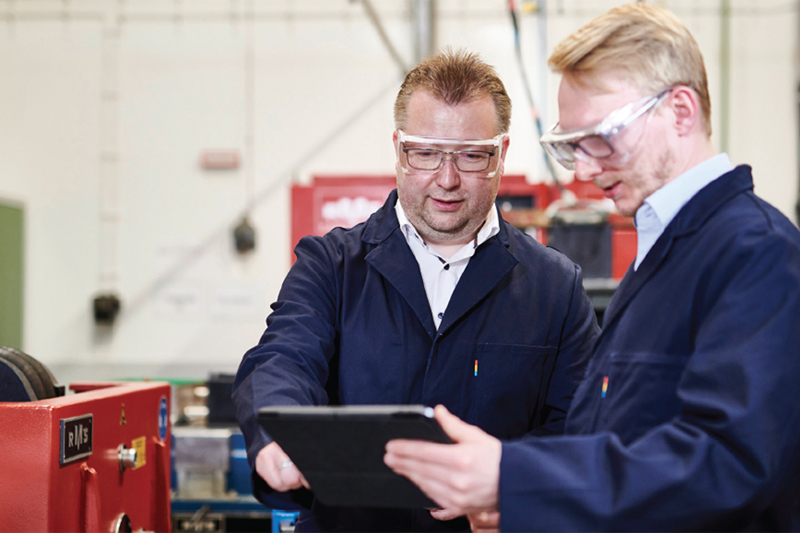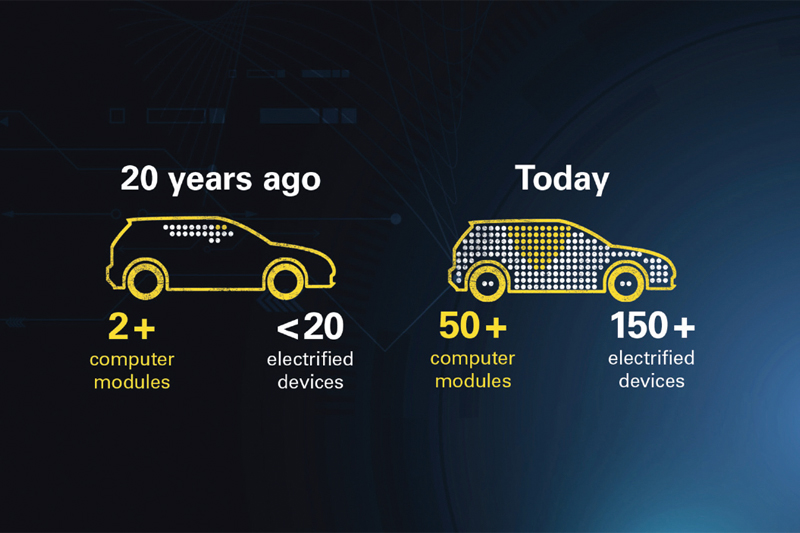
Varta is on-hand to dispel the myths behind selecting the right battery for the right vehicle.
Knowing which battery to recommend to a customer has become a daunting task. There are now multiple lead-acid technologies, vehicles with more than one battery on board, and of course the added complexity of what happens when a hybrid or full electric vehicle turns up at a workshop. It’s becoming increasingly difficult to know what type of battery is needed for each different vehicle type; what if it has a start-stop system or a micro hybrid system? The days of just offering a 063 as a one-size-fits-all solution are behind us. The question is, though, are factor staff getting the support they need to accurately recommend the right battery to a workshop first time?
Start-stop
Nowadays, there are several types of lead-acid battery technology. Not only are there conventional ‘flooded’ lead-acid batteries which have traditionally been used as the starter battery (often referred to as ‘SLI’ for Starting Lighting Ignition), but there are also two newer lead-acid types – Absorbent Glass Mat (AGM) and Enhanced Flooded Battery (EFB). The type of vehicle and the amount of electrical power needed to supply the starting functions and electrical consumers is what determines whether an AGM, EFB or conventional battery will be required. If the vehicle has a start-stop system on board – and over 95% of new vehicles do – it will need either an AGM or EFB so it can cope with the vastly increased number of starting cycles. Rather than cranking the engine just once per journey, the battery supports multiple start-stops. This happens every time the vehicle comes to a stop in traffic or at junctions, meaning a more robust battery is required.

When replacing an old battery, it is important to replace like-for-like or like-for-better technologies, and not to fit a conventional battery to a vehicle with a start-stop system (the vehicle won’t function properly for very long). Fitting the correct battery technology type first time will keep customers happy and on the road, and help workshops avoid costly repeat repair work. Depending on the vehicle manufacturer, a car with start-stop will have either an AGM or EFB, so be sure to check the correct type is sent to the workshop.
Auxiliary power
Some vehicles with an internal-combustion engine now have two batteries: a regular 12V starter battery and an auxiliary battery. This is known as a ‘dual-battery system’. More than 10% of the car parc with start-stop technology is already equipped with dual-battery systems in order to meet the increased power demands. This percentage is expected to grow even further with the ever-growing number of electrical consumers in start-stop cars. Auxiliary batteries are designed to support back-up applications. Popular vehicle models, such as the BMW 5 series, Volvo V40 / V60, and many Mercedes models, are all equipped with an auxiliary battery. Depending on the make and model of the car, auxiliary batteries service different functions. These include: the increase of the start-stop function’s duration, support of comfort functions during engine start, support and protection of electrical systems (i.e. brake-by- wire), and emergency systems support.

So it may be worth checking, when a battery is being ordered, is this the main starter battery, or the auxiliary battery that needs replacement? They are not normally the same battery, so be sure to check which battery on board the vehicle needs sending to the workshop.
EV and hybrid
There is a misconception that electric vehicles or hybrid vehicles don’t require a lead-acid battery, but have you ever wondered what happens when the lithiumion battery stops working? If you look under the bonnet, you will find your answer. Alongside the high voltage lithium-ion traction battery, you will likely find a second one: a 12V battery acting as a second power source to ensure the uninterrupted function of safety critical systems, in case of a traction battery failure, but also for key off-loads like the central locking system. Lead-acid AGM and EFB batteries have proven their reliability for years, making them the perfect companion in supporting the 12V electrical system of electric or hybrid electric vehicles.
Lithium-ion batteries are considered the successor for lead-acid technology when it comes to the drivetrain of electric or hybrid electric vehicles. However, they are not as inherently robust as other rechargeable technologies and require continuous monitoring. Lithium-ion cells need protection from deep discharge and being overcharged. Additionally, they need to have the voltage maintained within safe limits, making a special protection circuitry mandatory. A further aspect of the protection circuitry is that the cell temperature needs to be monitored to detect and avoid critical malfunctions.
This is where already proven solutions like AGM and EFB play to their strengths. They step in when the high voltage battery fails or switches off, to lock and unlock the car, and also serve as an additional power supply to buffer the electrical system. They ensure that important safety functions such as ABS and ESP are working at all times. AGM and EFB batteries are far from being obsolete. Their construction and behaviour, as well as their lack of electronics, make them a reliable and robust power source.
As the number of electric and hybrid vehicles continues to grow each year, the replacement of the lead-acid battery on board these vehicles will also increase. Branch staff at a motor factor can feel confident in offering Varta as a replacement to these lead acid batteries.
Partnering up
As we’ve now discovered, ensuring the right battery is supplied is dependent on the type of vehicle and its power requirements. It can be a bit of a minefield to navigate through, but Varta’s Partner Portal is a viable tool to assist you.
The Partner Portal provides assistance to factor staff and technicians. It uses OE information to help identify the correct battery for every vehicle, and also includes step-by-step fitting instructions. For factor staff wanting to know more, click here.







